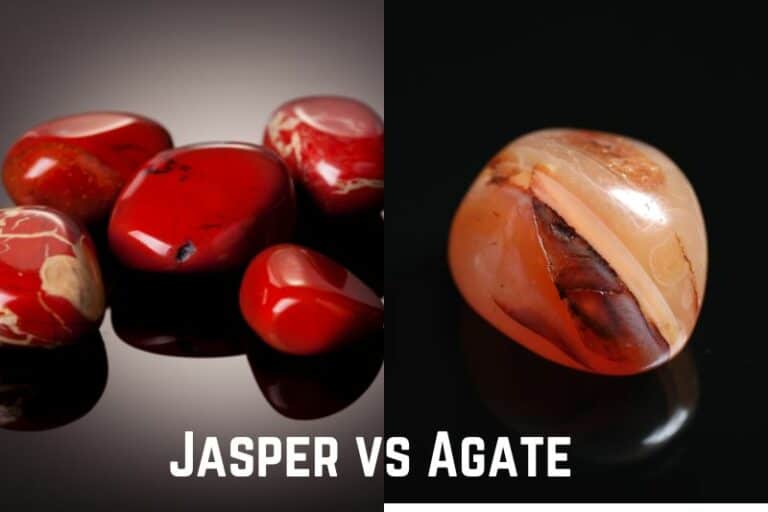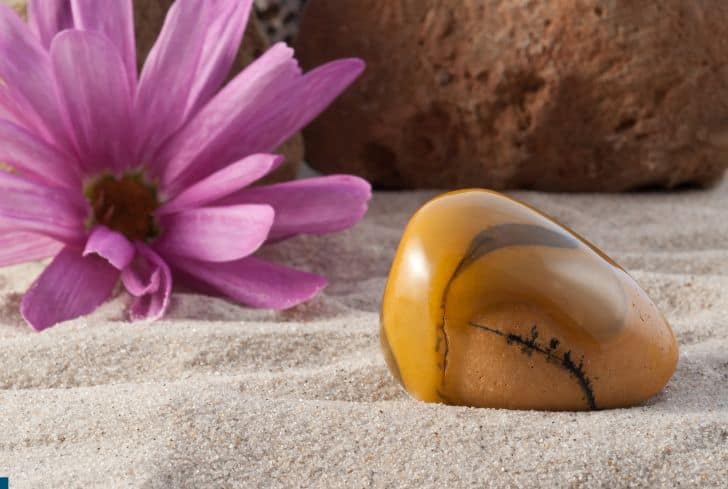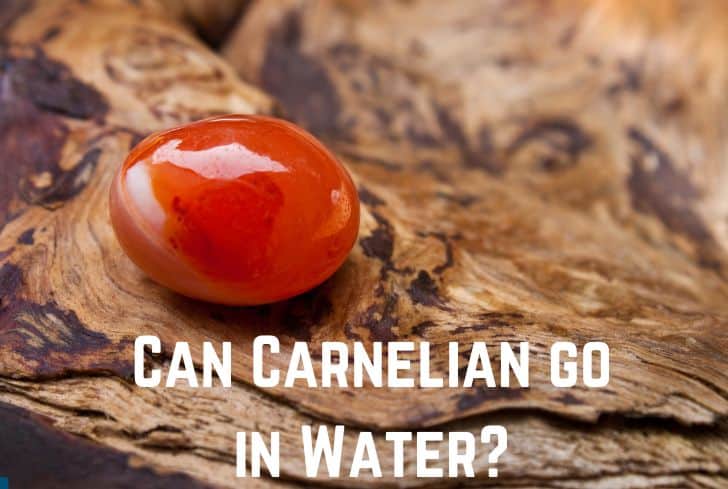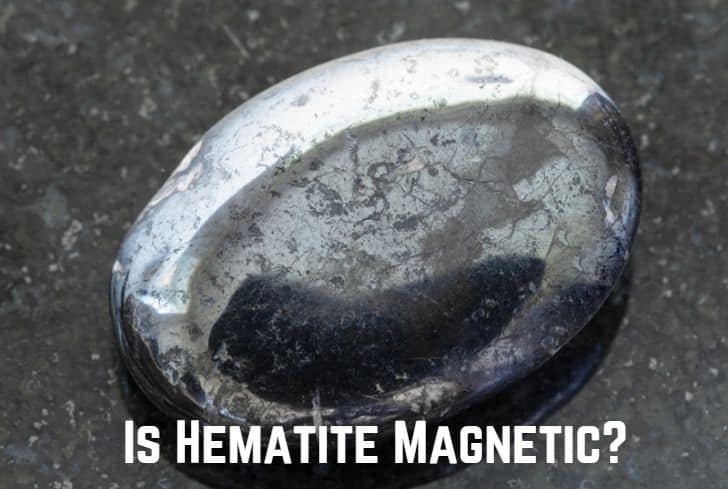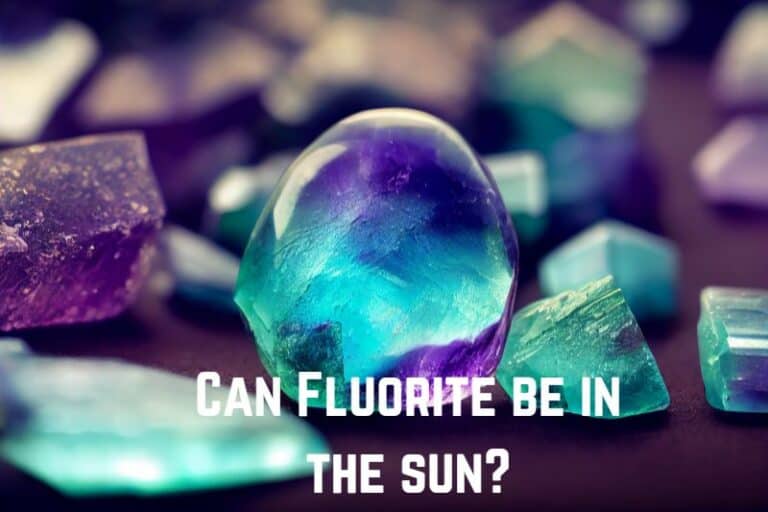Lapis Lazuli vs Sodalite (Full Comparison)
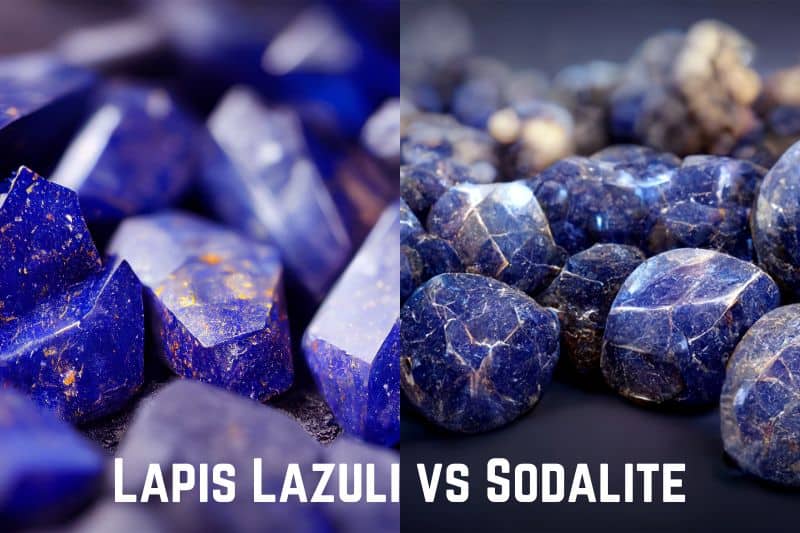
Both Lapis Lazuli and Sodalite are gorgeous blue gemstones. Their similar appearance often causes people to mistake one for the other. However, there are significant differences between the two, which we will discuss today.
We will begin by looking at the similarities. Then we will discuss their various properties like chemical composition, hardness, clarity, etc. Finally, we will learn how to take care of the stones and about their various uses.
Read: Carnelian vs Red Jasper (Full Comparison)
What is Lapis Lazuli?
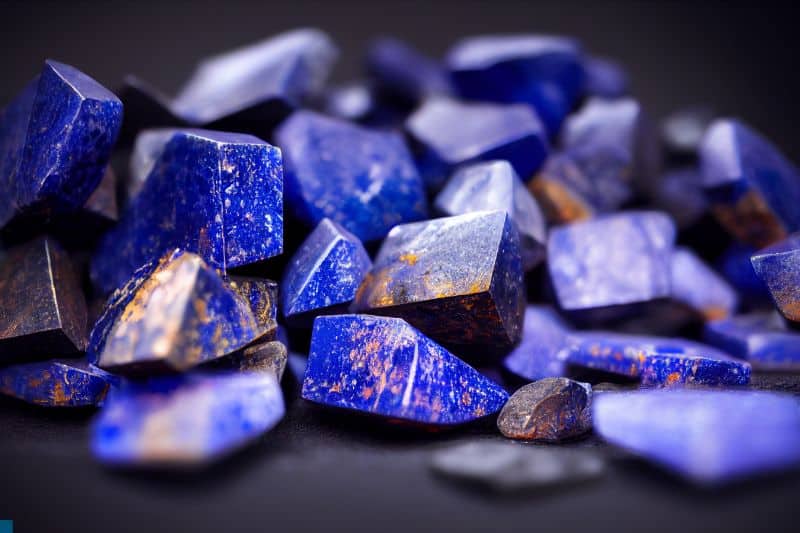
Lapis lazuli is a deep blue metamorphic rock that has been prized since antiquity for its intense color. It is often used as a semi-precious stone in jewelry making and is also used as a pigment in painting. Lapis lazuli is composed mainly of the mineral lazurite, but can also contain other minerals such as calcite, pyrite, and sodalite. It is found in Afghanistan, Chile, Russia, and several other countries.
What is Sodalite?

Sodalite is a blue and white mineral that is often used as a semi-precious gemstone. It is a member of the feldspathoid mineral group, which means it is a mineral that does not contain silica as a major component. Sodalite is composed mainly of sodium, aluminum, silicon, and chlorine, and it often contains other minerals such as calcite and pyrite.
It is found in several countries around the world, including Canada, Brazil, and Russia. Sodalite is often used for carving, jewelry making, and as a decorative stone. Some also believe it has healing properties and is used in crystal healing practices.
Similarities Between Lapis Lazuli and Sodalite
Despite their differences, lapis lazuli and sodalite are still similar in some ways.
Firstly, blue specimens of lapis lazuli and sodalite look quite similar. Blue is usually seen as a color of peace & tranquility, which is often associated with trust too. Both these stones bring these emotions with them.
There are slight differences in their shades of blue, but their smaller pieces can still be confusing for many people. Secondly, both lapis lazuli and sodalite are made up of silicate minerals; the former primarily contains lazurite, while the latter has sodium aluminum silicate.
Thirdly, both are semi-precious stones. They are not very expensive, and their beautiful appearance makes them ideal for jewelry and decorative objects. Both stones also have a long history of cultural significance and continue to be valued for their metaphysical properties.
Differences Between Lapis Lazuli and Sodalite
Chemical Composition
Although lapis lazuli and sodalite are both made up of silicate minerals, their exact composition still differs.
Lapis Lazuli is made up of various minerals, and lazulite is the primary component, which gives the stone its distinctive blue color. To be deemed lapis lazuli, a stone must contain at least 25% blue lazurite (a blue silicate mineral of the sodalite group).
Along with lazurite, two other primary minerals are calcite (which creates white layers or mottling) and pyrite (making grains of gold color in the stone). Other minerals like mica, dolomite, and even sodalite may also be present in the stone.
Sodalite, on the other hand, is a tectosilicate mineral having a chemical formula Na8(Al6Si6O24)Cl2. It is a member of the feldspathoid mineral group, which includes aluminosilicate minerals containing calcium, potassium, or sodium.
Sodalite occurs in igneous rocks that have crystallized from sodium-rich magmas, hence its name. As we saw earlier, sodalite itself may be a constituent of lapis lazuli.
Color
Both lapis lazuli and sodalite are known for their blue colors, but these differ in their shades; sodalite may also be found in other colors.
Lapis lazuli has an incredible blue color, thanks to the lazulite present in its composition. This is a wonderfully rich, royal blue. Lapis Lazuli’s color was so gorgeous that it was often used as a pigment; Van Gogh used it in his famous painting, The Starry Night.
In contrast, sodalite’s blue is usually less striking and a little darker. The best pieces of sodalite can only look as good as the average pieces of lapis lazuli. Sodalite also comes in various other colors, like grey, green, and red.
Hardness
Neither of the stones is very hard.
Mohs Hardness Scale is a relative measure of a mineral’s resistance to scratching. Besides that, it also indicates a mineral’s relationship to water. Usually, a value over 5.0 means that the stone is safe to go in the water.
Lapis lazuli is a combination of several minerals and therefore does not have a uniform hardness. Depending on its composition, its value on the Mohs Scale can range between 3 to 6.5.
Sodalite, on the other hand, can range between 5.5-6 in terms of hardness.
Pattern and Clarity
The two stones also differ in their diaphaneity, pattern, and clarity.
Lapis Lazuli is always opaque. Sodalite, on the other hand, can be transparent or even translucent in some cases. There are some subtle differences in their pattern & clarity.
The blue color of lapis lazuli is usually even because it is fine-grained. In sodalite, however, the blue shades are more likely to appear blotchy or mottled. The graining will also be slightly more coarse.
Lapis lazuli exhibits golden freckles on the surface due to the presence of pyrite. This will not be present in sodalite, so you can use this to distinguish the two stones.
Lapis Lazuli may also have white streaks due to calcite, but these will appear imperfect or in a granular structure. On sodalite, however, these white streaks will be uniform.
Besides these, a particular variant of sodalite called Hackmanite displays an incredible effect known as “tenebrescence” or “reversible photochromism”. It means that the gemstone will change color when exposed to sunlight and slowly turn back to its original state in the dark.
Metaphysical & Zodiac Association
Both lapis lazuli and sodalite are valued for their different metaphysical properties.
Lapis Lazuli is known for serenity, stress relief, and relaxation. Many also use it to connect to spiritual guides and astral travel. Finally, it can also be used to increase spiritual consciousness & wisdom.
Check out this video by Crystal Meanings to learn more about the spiritual powers of lapis lazuli.
Sodalite, on the other hand, is associated with peace. It is a great stone for overcoming feelings of low self-esteem and lack of confidence. It is also linked to the throat chakra, which is why it helps to improve written, verbal, and overall communication skills.
In terms of zodiac associations, lapis lazuli is the traditional birthstone for December. It is also used for the 7th and 9th anniversary. It works best with Sagittarius and Capricorn signs by strengthening their inner power and intuition. It can also bring good luck & success.
Sodalite is the modern birthstone for Sagittarius. It is believed to fuel a person’s passion and will. It also helps to balance out one’s personality traits.
Pricing
Lapis lazuli is slightly more expensive than sodalite.
Lapis lazuli has a long history of cultural significance, and in the European art world, it was famously known as “ultramarine”. At the time, it was brought to Europe through the Silk Route and was highly sought after—it was even more expensive than gold!
Today, while lapis lazuli is not as expensive as gold, it continues to be valued for its historical significance, relative rarity, and beautiful appearance. A gem-quality specimen with a deep saturated blue color can cost around $100. An ultramarine dye can even go as high as $1000 per pound.
Sodalite, on the other hand, is slightly cheaper. Historically too, it has a lesser significance than lapis lazuli. It was mostly found in remote areas like Greenland, where cultures did not exploit it fully, and there was no outside demand for it.
Still, sodalite is now valued by hobbyists and makes lovely faceted gems. It can come at an average price of $10 per carat.
Location
Both stones are found in different locations.
Lapis lazuli was initially discovered in Egypt and Mesopotamia; today it mostly comes from Myanmar, Chile, and Afghanistan. Sodalite was first found in Greenland and is now mined from Namibia, Canada, and South America.
Care
While it is not safe to immerse lapis lazuli in any water, there are several other ways of cleansing it, such as:
- Smudging the stone with smoke from sage, sweetgrass, or lavender. Besides cleansing, the smoke’s scent will also purify your stone.
- You can bury the stone in a bowl of brown rice and leave it overnight. After that, make sure you dispose of the rice as it has absorbed all the negative energy.
- Lapis lazuli can also be charged with a tuning fork. Check out this video by Satincrystals to see how to use this method.
Follow these steps to clean sodalite:
- Mix a mild detergent with warm water.
- Immerse the stone in the solution for a few minutes, while scrubbing its surface with a soft brush.
- Rinse the stone under running water, removing any excess soap.
- Let it air dry. You can turn the stone around to ensure that no water is left in the crevices.
Sodalite has a relatively low hardness of 5.5-6, so it can scratch easily. You must keep it separate from other pieces, as popular jewelry pieces like quartz or topaz will scratch it.
Because of its low hardness, sodalite is usually not used for jewelry pieces that are prone to wear and tear, like rings or bracelets. But if you are doing so, use protective settings for the gem.
Read: Jasper vs Agate (Are They Different or Same?)
Uses of Lapis Lazuli and Sodalite
These are the uses of Lapis Lazuli:
- Lapis lazuli has always been prized as a gemstone and ornament. It is often cut into cabochons and beads. Because of its low hardness, lapis lazuli is best for earrings, pins, and pendants, where abrasion is less likely.
- For over 1000 years, lapis lazuli has also been used as a pigment. Bright blue pieces of the stone are ground to a fine powder, which can then be mixed with oil as paint.
- Lapis lazuli is also used in small sculptures and mosaic projects. Two columns framing the iconostasis in Saint Isaac’s Cathedral are also made up of lapis lazuli.
Sodalite has the following uses:
- Like lapis lazuli, sodalite is also used as a gemstone and ornament.
- It is also associated with various spiritual beliefs.
- Sodalite can also be used in carvings, sculptures, and home decor.

